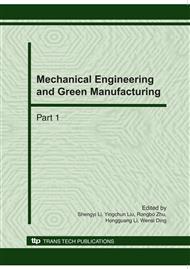p.756
p.761
p.765
p.770
p.774
p.780
p.785
p.790
p.795
Effect of the Content of Sn on Microstructure and Mechanical Properties of Bi5Sb Solder Alloy
Abstract:
By alloying principle, a novel quaternary high-temperature lead-free solder was formed by adding trace Sn into Bi5Sb2Cu. The influences of trace Sn on the microstructure and mechanical properties of the novel solder alloy were systematically investigated. Results show that the new phases â-SnSb and mesh Sb2Sn3 are formed and dispersed in the novel solder, whose dispersion strengthening make the tensile strength and shear strength of the new solder alloy increase. When Sn is less than 8 wt%, the tensile strength and the shear strength of the new solder increase with the increasing of content of Sn. When Sn is 8wt%, the tensile strength and shear strength is respectively 52.79MPa and 17.00MPa, which is respectively improved about 90.6% and 64 wt.% compared to the matrix solder. When Sn is 10wt.%, the mechanical properties of the solder take a decrease trend, but they are still better than those of the matrix solder.
Info:
Periodical:
Pages:
774-779
Citation:
Online since:
October 2010
Authors:
Price:
Сopyright:
© 2010 Trans Tech Publications Ltd. All Rights Reserved
Share:
Citation:


